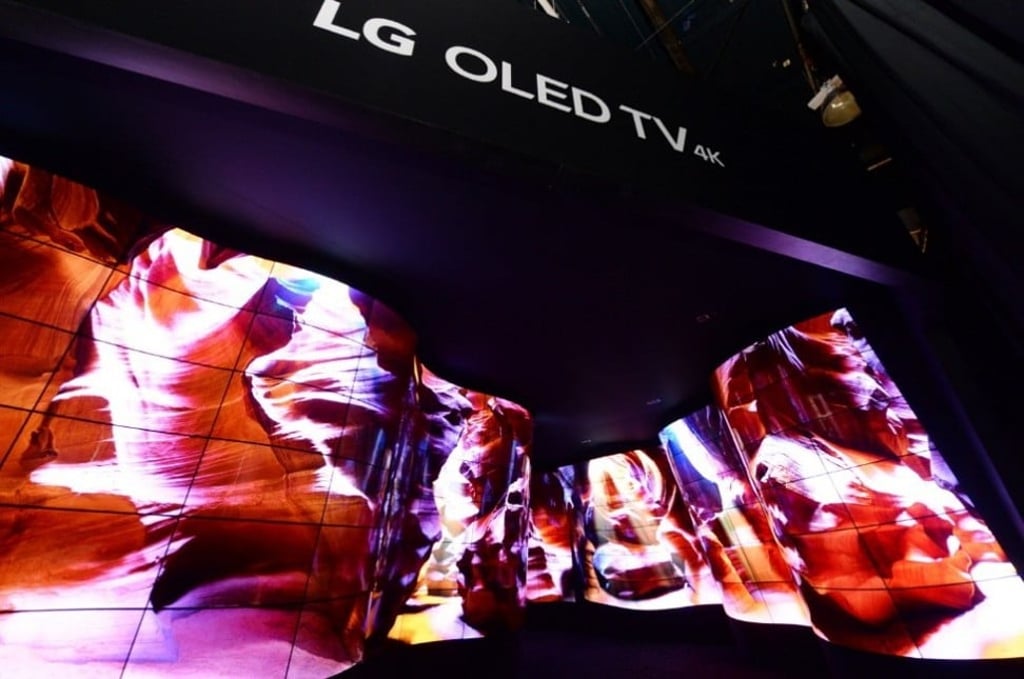How video gaming technologies are reshaping our homes
New hi-tech devices such as roll-up 65-inch TVs, personal IMAX theatres, augmented reality goggles and surround-sound headphones are transforming the living space into a digital realm

When the Atari 2600 was released in 1977, video games – which up until then (and for the cost of a few coins) could only be played on large stand-up console units in amusement arcades – found their way into people’s homes.
Families began to shape their living rooms into a space where they could “power up” into the digital world, and play popular games like Pac-Man to their hearts’ content.
Gaming has come a long way since then, which got me wondering... might the latest generation of “game changing” technologies prompt further reshaping of our living rooms, now and in the future?
Screens that are picture-perfect and paper-thin
Let’s start with televisions – and at the cutting edge are organic light-emitting diode (OLED) displays, with screens that are not only paper thin and light, but which also produce sharp, crystal-clear images.
LG’s 65-inch 4K television, the LG OLED Canyon, will roll up like a poster into a box so you can tuck it away and reduce clutter
Sony has a great screen that will be released this year called the AF8, which has a proprietary X1 chip that does the image processing, delivering a 4K image that uses Dolby Vision and HDR 10.
The amount of detail you can see at this resolution is mind bending – you can even see stray hairs!
Speaking of bending, OLED screens not only offer unrivalled picture quality for gaming, but some are also foldable.
LG has announced that, later this year, it is launching a 65-inch 4K TV – the LG OLED Canyon – which can be rolled up like a poster into a box, so you can tuck the screen away to reduce clutter.
Tech watchers anticipate that foldable OLED screens will become increasingly sophisticated, and will eventually be so affordable that we’ll all be plastering our walls with them.
An IMAX Dome Theatre – at home
My vision is that one day our living rooms won’t be box-shaped any more – instead they will be dome-shaped so you can truly immerse yourself in a virtual environment, such as Capcom’s action role-playing game Monster Hunter World, out in October.
The IMAX Dome Theatre – currently, there are only 60 of them in the world – will be part of your home.
Domes will completely engulf your peripheral view, making you extra sensitive to motion and the “reality” you are in.
Out-of-this-world home interiors
But instead of immersing yourself in a different reality, how about augmenting the reality of the living room you already have?
Magic Leap, a US company making head-mounted visual gaming displays, will be launching its augmented reality (AR) glasses later this year.

Unlike virtual reality glasses, the AR glasses are light and are also transparent, allowing you to see where you’re going without tripping over things – and making any room in your home an entertainment centre.
Gaming while baby sleeps
Sound is as much a part of the gaming experience as visuals are.
I have a baby in the house, so I cannot turn up the volume when playing video games – which is why I like a gaming headset, such as Logitech’s G633 Artemis Spectrum 7.1 Surround, to keep the room quiet.
I look forward to the upcoming release of Call of Duty: Black Ops 4, when I’ll be able to hear enemies sneaking up behind me, and tag them swiftly – all while my little one continues to nap blissfully.
Sound in games does more than just contribute to creating an immersive “environment”; it also signals and cues different levels and abilities, which are highly individualised.
I look forward to the upcoming release of ‘Call of Duty: Black Ops 4’, when I’ll be able to hear enemies sneaking up behind me in my headset
So rather than filling a room with sound, each of the players will have their own headset to personalise instructions, or communicate with AI (artificial intelligence) and with other players.
As these headsets continue to shrink, or become integrated into other peripherals, speakers will become a thing of the past, freeing up extra space in our living rooms.
There’s a new gamer in town...
Does all this seem too focused on what “hard-core” gaming might look like?
Perhaps playing Nintendo Wii, Sony PlayStation, Microsoft Xbox, or PC Games isn’t exactly your thing.
Well, Google’s Android and Apple’s iOS have secretly (though the cat’s now out the bag!) become big contenders in the casual gaming arena.
I’m a big fan of Apple TV because it combines a compact remote control as your video game controller using iOS.
There’s something about the tactile nature of it that is different from sliding your thumb across glass when playing on a smartphone or tablet.
It’s also lighter in weight than those other devices, which make my limbs go numb every once in a while if I’m leaning back on the couch.
I also find it a treat to be able to watch the film Kubo and the Two Strings and then launch the Fifth Journey’s Kubo: A Samurai’s Quest game which is based on it – all from a single TV remote control.

Joysticks, consoles and shelves of games once emerged to change the landscape of our living rooms. Might the latest generation of devices and media persuade us to rethink the space in our homes once again – perhaps even to the extent of removing the furniture – in order to accommodate all these new gaming set-ups?
If so, then I’m going to make sure of one thing: that my sofa stays exactly where it belongs ... plugged into the wall with its USB outlets and its electric recline – but that’s a topic for another day.


